One of the bravest and most beautiful books to be written and released into the world this year is the one authored by beloved author, Sarah Clarkson, who Cultivating readers are well familiar with. This Beautiful Truth is her memoir of traveling through the darklands of mental illness and finding healing through God’s strong presence of Beauty. That Sarah has managed to write about so much pain and struggle with such grace and beauty reflects her superb word craft and how deep her roots are planted in Christ her Redeemer.
I mean this when I say it – this is a book I have been waiting for nearly my entire life. It is a great, great gift to share this interview with Sarah with you. May you find healing, hope, and inspiration here.
Finding Story in the senseless
LES: Sarah, the way you tell your story here, it unfolds like a seamless tale that makes sense from the beginning, yet I know that is not how you experienced it. That is not how any of us experience our own stories. Our stories as we live them out are frayed and fragmented, ragged edges we piece together while looking for meaning in what often seems senseless. As a writer, how did you find a way to begin this telling and continue it? What kind of guidelines did you use to keep a coherent account in place?
SC: The writing process was a journey because I needed to discover what story I was actually telling.
Some stories you can narrate as they happen, some bring such beauty or grief you need the perspective of years before you even begin to find the words needed to bear what you’ve experienced. It was eighteen years between my diagnosis at seventeen and the writing of this manuscript, and before this book, I had only vaguely mentioned or written about my OCD before. I found it difficult even to journal about my OCD in the first years of my diagnosis, because I felt so bewildered and shamed by what I experienced. I needed years of perspective, of processing with my family (who suffered those early years with me), with a counselor, with my husband, before I had either the perspective or even the freedom from anxiety and guilt I needed in order to be able to tell this story.
Even then, it took several drafts of the book before I understood what I actually needed to write. There was a confessional and purgative element to the first draft. I wanted it all out, I needed to articulate to myself how much I had lost. I needed to write the blow-by-blow of the first days, to include every awful thing said to me, to try to describe the things that haunted me in more detail. There was a cleansing element to my writing as I allowed myself to speak what had, in some sense, remained undescribed since my teens. But what I realized several months in was that those chapters were a personal exercise in healing for me, but they did not adequately capture the story this book actually asked me to tell.
What I realized, deeply and powerfully as I wrestled and wrote (and oh, this was a book that took wrestling), was that one of the deep truths of this book is that God is the one who tells the story of my suffering. That is the life-changing truth I have come to embrace through all these long years and even more so in the writing of this book. My suffering is not something that happens to me in individualized isolation, my suffering is something invaded, healed, and framed by the presence of God.
That is the story burning in my heart, and when I understood that more clearly, I was able to plot the book and write it as an account of God’s presence in my darkness, I was able to look back through all my years and trace the intensity of his companionship, the moments of in-breaking grace, the significant seasons when he took my hands and led me through the blackness toward the daylight. God translates our experience to us, he reframes our stories so that what could have been a tale of bleak isolation becomes one of divine transformation, and that was what I needed to grasp in order to form this book.
A writer’s life ~ wishful imagining vs hard realities
LES: When you were writing This Beautiful Truth, you had lots of time to yourself, a quiet study with candles lit to write and reflect in, & someone bringing you trays of tea and biscuits to sustain you, right? 😉 Just the scenario that we all imagine to be necessary conditions for writing important memoirs. In reality, what was going on in your life when you were writing this book? Given the real conditions through which you wrote this, what made your writer’s life possible?
SC: I had to chuckle at your description because, well, let us examine the calendar! I want either to laugh or cry or bless the Lord that this book actually got written when I consider the circumstances of its creation. I began writing in October of 2019. Two weeks later, my husband’s mother was diagnosed with terminal cancer and we spent weeks traveling back and forth between England and the Netherlands, trying to keep those last precious days together before she passed in mid-November. At that time, I was pregnant with our second child, Samuel, who was born in January. Just when I was recovered from his birth, England went into lockdown for the Covid pandemic, meaning we lost childcare and my husband’s work as a priest increased. The book had to be set aside until July, when my husband arranged to take three weeks off for me to work, but I promptly came down with a case of pneumonia on his first day off, an illness I didn’t fully recover from for three months. We ended up using a week of holiday for me to get the manuscript in on time (after the deadline had been twice moved), and even then, I think I submitted it at three-o-clock in the morning.
The thing is though, the above is only half the story, because there was so much intensive and good living with our little ones in lockdown in between, so much grace offered as I fought the good fight to put down a few good words whenever I could. I was deeply supported by a husband who schemed with me to make writing time possible and gave his vacation in order to care for our children, and a lovely friend who became our babysitter as soon as that was allowed, giving me the time I needed in the last week to craft those closing chapters. It was a wrestle and a fight, but every good thing created in a broken world is!
Facing the dragons of memory
LES: All of us coming from dark pasts must at some point find a way to face our memories, the dragons that haunt and threaten us, if we are to really enter into healing. What offered you the safety to tell this story, to remember and not be consumed in the remembering? Is there any advice you would give to others who are facing fears about telling their own stories of sorrow and redemption?
SC: Love is the simple answer. Love creates the space in which it is safe for us to speak what is most dark and wounded in ourselves because it also pushes back against our narratives of unworthiness and guilt. Love draws us into conversation, helps us to know we are not alone or untouchable, helps us to see ourselves and God more clearly when pain has skewed, not only our hearts, but our vision.
I have needed faithful people throughout my life to listen to me in my struggle with mental illness, to talk back to me, to help me interpret and release and confess my darkness. The love I have experienced in this fellowship is one of the great beauties in which I see God’s love imaged.
My precious mom was instrumental in helping me to step away from crippling guilt and also to know myself treasured despite what I saw as my unworthiness. No matter what I confessed to seeing in my brain, to fearing, she met me with compassion instead of shock or anger or condemnation. When I said I couldn’t believe in God, she told me that was all right, he was bigger than my doubts and she’d believe for me. I was deeply blessed by her tenacious love for me, one that stretched to accommodate and comfort the awfulness of my illness, even when that meant my incapacity to leave home, or another panic attack.
My husband has been my partner and true lover in the way he has given himself to serve and love the whole of me – the OCD parts that need to ask the same questions again and again, that obsess over our children, that sometimes lead me to hours or whole days of depression or tears. But this is not his primary vision of me.
He sees me as capable and creative, his beloved, and he calls me forward into that identity.
I have also been deeply helped by counseling or spiritual direction. I spent several years in conversation with one counselor who helped me to name and wrestle through the consequences of my illness, the insecurity they caused, the self-doubt as well as the ongoing wrestle to find and love, and know myself loved by God.
If there is one thing I would say in facing such darkness for yourself, it is never to do it alone.
We are people formed by love, created for companionship, and God so often reaches to us in our darkness clothed in the hands of others. To trust even the people we love with the darkest parts of ourselves can be terrifying. But we need love, we need voices outside our own, to heal our sorrow and help us to tell a new story about ourselves. Seek out the faithful ones, ask them to walk with you. Seek professional help. Whether counseling or psychiatric treatment, seek those whose wisdom & training can help you to confront the darkness without being unraveled by it.
Remembering forward
LES: There is a quality of nightmare – a dragon’ish quality – to the process of remembering for many people who are emerging from trauma and trying to move on from painful pasts. But there is another kind of remembering that is the counter to that, a kind of remembering that guides us beyond the nightmares and the lostness. It seems like a kind of remembering forward, if you will, as much as remembering backward because it taps into something deeper and truer than our experience and fears. You mention this when you recount the story about Andy Catlett, from Wendell Berry’s novel Hannah Coulter. How might we best cultivate that kind of remembering forward to counter the frightening memories and help guide us homeward?
SC: Beauty invites us into a renewed imagination, one radically healed by the rekindled possibility of hope when pain had made us believe joy to be impossible. We are offered a new and better story about ourselves and the world. This is, to me, at the heart of the story offered to us in the Gospel, and the Gospel is the defining narrative of our existence and of Beauty as a power to heal and end our darkness. Our most formative memories are profoundly shaped by the narratives we believe about ourselves, so to cultivate that ‘forward remembering’ means, I think, to immerse ourselves in the true and redemptive stories that Beauty tells about ourselves and the world.
Scripture first. This is our epic story, the actual hero tale of the world and we need daily immersion in a narrative that names us both as sinners, but also as saints redeemed and bound for a healing and a glory we haven’t even begun to imagine. We need the history of God’s presence to constantly invade our profound fear of isolation and loneliness. We need to hear the ‘signs’ of Psalms and Gospels repeated (just like Aslan told Jill in The Silver Chair) so that we will be able to imagine lives transformed by the Holy Spirit, hearts softened, justice restored.
But one of the great forms beauty takes in this world, a place where I believe the Holy Spirit is powerfully active, is in what those who are in the midst of being healed are creating. The storytellers and song-makers; they are singing out the reality of the healing they have found and by sheltering in what they create, we inherit a new set of memories.
I have sheltered in the ‘memories’ provided by Tolkien and Elizabeth Goudge, by George Eliot and Wendell Berry. They offered me a story, a set of ‘memories’ so to speak, that allowed my own imagination to stir, to kindle, to reach toward the light. We are invited to inhabit the memories of people who have both witnessed and described the power of Beauty to heal. By sojourning there, we too are offered the capacity to imagine our own healing.
Silent language of Image
LES: For a woman openly at home with words as both a seasoned reader and gifted writer, Sarah, you are also profoundly influenced by great visual art – particularly paintings. Something in great art speaks to you directly without words but in a definitively clear and expressive language. You understand with an unusual clarity what is being ‘spoken’ through a painting engaging in wordless dialogue full of meaning. In the chapter titled Image, you write,
“The longer I walked the road of my illness, the more aware I became of the powerful way that great art could grip my hand and lead me forward. There’s a kindling power in the light of something created out of a broken human heart, a tenacious creativity that splotches the darkness with gaudy stars and fills the shadows with a siren music of hope and kindles a story like a campfire in our hearts, where we may find refuge and warm our hands.”
Why does art and image speak to you so viscerally when at times nothing else can?
SC: This is one of those questions that makes me itch to study aesthetics in even more depth so I can say more clearly what I feel! But art, for me, offers a visceral and immediate encounter with beauty that arrests me in the moment, that summons me to the present. I think we are halted in our steps by the visual confrontation of a powerful image; the artist cannot politely ask us to look, we are, rather, compelled by the potency of what has been created before us. Image and symbol, they bypass so much of our constant constant interior argument and commentary, requiring us instead simply to ‘look’. And in that startled looking, I think we often begin to be aware of the world and ourselves in a different way.
We interact with images very differently from ideas; they are more like a physical body sitting in the room with us, a presence that often engages emotion and imagination prior to reason.
Thomas and I have made investing in art one of the ways we mark certain occasions on our lives. Our home is slowly filling with images that immediately remind us of what we love, who we want to become, or the goodness we have known. For Thomas’ ordination last year, we bought and framed a high quality print of Caravaggio’s The Gospel of St. Matthew, and every time I pass that magnificent piece I am arrested by something new – the alert tilt of St. Matthew’s head, the ready hand, the pointing finger of the angel – and confronted with the symbol of Thomas’ calling to make known the Gospel of Christ. Images like that influence us on a daily basis, and their immediate power is a grace.
Summoned to healing
LES: In your chapter titled “Beauty is Truth” you set a framework for understanding the significance of Beauty as bearing equal weight to Truth and Goodness. You write that,
“Beauty teaches us not just that God exists but that He is lovely and good. Beauty tells us that we were created for joy and summoned to healing.”
The word ‘summoned’ carries an implication that we have an active response required to this. Healing is not something passively received, doled out while we are disengaged recipients. To be summoned requires a chosen response, a decision, and an act of will to either respond or decline. What do you see as the role of courage and choice in healing?
SC: I think one of the most startling things that beauty does it to renew our agency. We are empowered by Beauty as we are healed, because it restores, not just our passive sense of God’s goodness, but our active sense of ourselves as made in his Image, called to participation in God’s activity in the world. In that sense, Beauty is a renewal of the creation mandate, because from the first, God intended us to be co-creators, agents acting to order and nurture, beautify and name in companionship with Him.
I’ve always found it fascinating that in The Lord of the Rings, the ‘wise characters’ were those who understood that they were called to use their own small time or influence for courage. I find this of particular interest because Tolkien composed The Lord of the Rings as a member of a literary generation called ‘the lost generation’. While many of his contemporaries responded to their profound suffering with stories of hedonism and nihilism, he created an epic myth driven by characters who choose, act, and create. Having seen the worst in the trenches, having lost beloved friends, Tolkien understood the power of our courageous choices in defying the darkness and coming to a place of healing. Something I found interesting in his letters as he described Gandalf was that Gandalf was meant to be a sort of figure for the Holy Spirit, not dominating those around him by making them passive, but by kindling them to the action, the creation, the courage of which they were capable. This is in direct opposition to the lord of the Nazgul whose power is to bring despair, thus disabling action and courage in those who encounter him.
Identity is key in embracing both courage and choice in healing. It is one of the fundamental things restored to us as we confront darkness. Passivity, a sense of powerlessness, of life being unchangeable is one of the deep wounds of a broken world that God’s presence in our darkness overcomes. I love the way that the New Testament addresses believers as ‘holy ones’ or ‘saints’, the way that Jesus drew his disciples into his healing and ordering of the world. His presence always empowers those around them, inviting them to take part in his kingdom, not merely to witness it.
But it is a choice. It was for me. I have known clearly at certain points throughout my story that in order to heal, to agree with the Beauty being offered to me, I needed to choose it as the defining presence in my life. There was a keen element of risk in that choice too: it meant I had to walk forward expecting goodness to arrive, it meant I had to trust that I would find God in the places I so feared him to be absent.
But I did. I did. Because God’s invitation to choose his life comes in its most viscerally intimate form in our inmost journeys of pain and suffering and trauma. While Jesus arrives simply to minister to us, I also believe that as we are restored we are inevitably asked to participate in our restoration, to agree with God’s work, to reach for the light, and ultimately, to be those who become a source of divine Beauty for others.
Stocking the soul with beauty
LES: A few years ago, when we did your interview about your book, Book Girl, I asked you, “As you think of the world that Lilian will grow up in – the beauties and the bogeys both, how do you best teach her that beauty is stronger than despair, and that dragons can not only be fought but can be beaten?” In your answer to that question, you said something I have gone back to many times since. You wrote,
“I want her imagination crammed and formed by other great stories, by the best literature of the ages, by a host of imaginative companions teaching her how to see, how to love well, to choose beauty, to fight bravely.”
So many hard things have happened since then, things none of us could have imagined or even consciously prepared for. Given all that has happened in your own life, let alone worldwide, do you still believe this? Is it still true as a compass for you and Thomas in how you raise her, Samuel, and your newly arriving Lucie?
SC: Without question or doubt, yes. If it was true then, I find it immeasurably more true now. In every dark season, whether the death of Thomas’ mother, the isolation of the pandemic, seasons of sickness and busyness and stress, I have seen God arrive in the subtlest of ways to encourage, to kindle, to whisper us back to hope.
And so often that has taken place for me through great stories! In a particularly dark season that coincided with the exhaustion of early pregnancy, I found myself often unable to have a formal quiet time or form a coherent prayer, but when I had a few snatched moments to myself, I’d curl up on my bed and watch another episode of Call the Midwife, a show whose stories are rich in the themes of grace invading the darkest of places. I’d cry as I watched and offer that up as my prayer, as my heart being willing to receive grace for myself and try to bring it again to others. My own weary imagination was so formed by those stories of life and goodness invading the poorest and most grieved of places, and I believe as strongly as ever in the power of an imagination stocked with beauty in order to see us through the darkness.
And yes, I still read untold dozens of books to my toddlers in the hopes that their souls will be well-stocked with beauty too.
Reconciling peace & battle
LES: A theme that runs through the whole of your writing, Sarah, side by side with the theme of Story, is battle. That is especially evident in This Beautiful Truth. Battle is not always flagrant and obvious, but everything you write traces back to the essential call to engagement of choice and the fight to choose beauty. To choose Life. Yet you are one of the most peace-called people I have ever known, cherishing every precious element of it. In the chapter, “To Wrestle is Righteousness”, you say,
“But the way we wrestle will shape the whole of our story, and Beauty tells us what we are wrestling for.”
How do you reconcile the difference between the longing for peace and the call to fight for what is good, true, and beautiful? Why does God in His love, ask this of us?
SC: We live in the broken place. That’s the simplest way I know how to explain it to myself. We weren’t meant for struggle or intended for unrest, we weren’t even originally intended to be fighters. Discord and strife entered the world at the fall, and it is a condition of sin and evil that we will live out our stories shaped by struggle of one kind or another.
The radical grace of God, though, who is in Himself both ultimate Beauty and Peace, is that by entering into the fight, by becoming the great Lover and King who willingly shares our struggle, God transforms our battle. Instead of it being a meaningless grapple in which we are destroyed, it becomes a wrestle toward righteousness, toward healing. Our fighting becomes a pilgrimage, one of the ways that we walk forward into the arrival of the kingdom of heaven.
We will become exhausted though, if we don’t continuously receive and dwell in the beauty and peace that are offered. None of us are called to fight for the restoration of the world on our own. The reason we fight is because we have been loved. We strive to offer ‘love to the loveless shown, that they might lovely be’ because we have been transformed by love. But we will never be capable of that if we are not renewed day-by-day by the tenderness of God himself, reaching out to us in the moments of transformative beauty that are his gift.
Reading Richard Foster’s Simplicity and Mark Buchanan’s The Rest of God deeply shaped my understanding of what battle looks like and why we choose spaces of retreat and quiet, of peace and deep rest. We are commanded to those throughout Scripture, and that is because we must never forget that the source of our strength, the fount of our fighting power, is the God who loves and heals us.
I’m learning to cultivate spaces of rest with more intentionality than ever (especially as my current season doesn’t easily offer rest). To carve five minutes for quiet in the morning. To read deeply. To walk and listen to the constant birdsong. To read a novel, to listen to choral music with a candle, to pray, to feast; these acts are as defiant and courageous as those of confrontation or struggle.
Choosing Life ~ Fixing our eyes on light
LES: One of the things I know core to my bones is that between light and dark, life and death, blessing and curse, is choice. How do we cultivate the courage to choose life when reaching for it sometimes seems so futile and we are so frail? How do you fix your eyes on the Light when the darkness seems so vast and consuming?
SC: I think the power to choose light in the midst of darkness is one that grows from a thousand tiny choices so that in the moment of crisis, there is a sense in which we glide forward on what we have already agreed with a hundred times before. The Scripture we have read daily. The stories we have internalized. The small, daily, holy rituals of beauty, prayer, cultivation, these tiny acts of faithful choosing gird us for the larger choice of faith in the face of the darkness.
I think that I grow increasingly pragmatic about what courage means the longer I journey in this dark world. We are frail, embodied, needy beings and when the darkness seems unspeakable, sometimes we just need to nourish the most basic needs of stomach and heart. We need to literally taste goodness and keep going. There’s a hobbit-like aspect to holy courage, I often think, one which faces Mordor-level despair by frying up a dinner of bacon and mushrooms, by sitting in the garden and watching the sunset, by making music with friends, by reading a grand old story aloud. We light these tiny, defiant fires of hope and fellowship that embody the opposite of despair, the opposite of death, and against all odds, they set the darkness at naught.
I’d also say that, for me, there was a season in which I knew I was called to make an ultimate choice for life, for God, for hope. I had spent several years wrestling with Scripture, doubting God’s goodness, my every quiet time dogged by questions and anxiety, and one day I knew clearly that I needed to draw a line in the sand. I trust You. I trust your goodness. I trust your Beauty. It didn’t mean I wouldn’t doubt or wrestle anymore, but it meant that my wrestling became a forward journey, a daily reaching toward the Light instead of a constant looking over my shoulder at the shadows.
“I would venture to say that approaching the Christian Story from this direction, it has long been my feeling (a joyous feeling) that God redeemed the corrupt making creatures, men, in a way fitting to this aspect, as to others, of their strange nature. The Gospels contain a fairy-story, or a story of a larger kind which embraces all the essence of fairy-stories. They contain many marvels—peculiarly artistic, beautiful, and moving: ‘mythical’ in their perfect, self-contained significance; and among the marvels is the greatest and most complete conceivable eucatastrophe. But this story has entered History and the primary world; the desire and aspiration of sub-creation has been raised to the fulfillment of Creation. The Birth of Christ is the eucatastrophe of Man’s history. The Resurrection is the eucatastrophe of the story of the Incarnation. This story begins and ends in joy. It has pre-eminently the ‘inner consistency of reality’. There is no tale ever told that men would rather find was true, and none which so many sceptical men have accepted as true on its own merits. For the Art of it has the supremely convincing tone of Primary Art, that is, of Creation. To reject it leads either to sadness or to wrath.”
― J.R.R. Tolkien, Tolkien on Fairy-Stories
The inner consistency of reality ~ Eucatastrophe
LES: Sarah, whenever I think of you, I associate you with two words. One, you know, was offered years ago now as a benediction and it has remained my ongoing prayer for you. Flourish. The other word is Eucatastrophe. Everything sad coming untrue. [The word hovers over you like an invisible rainbow, irresistibly strong and undeniably true. The promise with the unbreakable assurance that there is an undefeatable Light at the end of a tunnel of shadows and darkness. That Good will not be overcome by evil but that evil will fail and Good will outlast it and endure. That wrongs will be righted. The broken world will be mended and made new. Suffering will transform to glory. Weeping will give way to laughter. We were made for Joy, and to Joy, though through grieving, we will return Home.]
One of the things I have loved most about Tolkien’s seminal address, “On Fairy Stories,” is that singular phrase, “the inner consistency of reality”. Everything about that phrase reverberates in me with a validation that what I have seen and known and believed to be true, is in fact true. The ethereal longing for all things to be made right bears witness to this ‘inner consistency of reality’. It is not wishful thinking to long for the happy ending, it is the only real ending for those who choose Life. At the core of our being, we are made for the glory of eucatastrophe.
When you hear the phrase, “The stories are true”, what does that echo and sound in you?
SC: Throughout my life, from the time I was a tiny girl, I have been visited by moments of what I called ‘knowing’. In them, I felt I grasped, tasted, was immersed in something so true it could never be denied; joy or belovedness or rest. Often, they came with an image or a sense of atmosphere: the picture of a wild dance led by aching music that somehow both wove and expressed illimitable happiness, a walk in a pine forest, knowing I was about to discover someone I yearned to know, the image of a home, a fireside, and a table set ready with a feast. I glimpsed these imagined or gifted moments and felt unshakably sure of their reality, of these being the true story for which I and all the world were headed. I think they were very similar to Lewis’ experiences of Joy, those fleeting moments of insight sparked by the most ordinary of experiences or by a story that left him yearning even as they sated the deepest parts of his soul. I don’t even know how to explain them, but when I hear ‘the stories are true’, I think of those moments, and of finally grasping, tasting, living their almost limitless splendor.
But on a more ordinary level, I’d also say that one of the aching hopes that phrase kindles in me is simply the deep belief that the work we begin here with so much frailty, with so much continued loss and sorrow, will finally come to fruition. I think I see my own weakness and culpability so much more clearly the older I get, the brave choices I couldn’t make, the struggle I have daily to hold the courageous line. I am so aware of the way that the beauty I struggle to make and receive is tangled up with my weakness and need, with my deep sorrow, with the possibility of loss. To know that one day the deep and beautiful things I have chosen to hold and believe will bear an eternal fruit, will come to fruition, will endure and never pass away is a knowledge that gives me a profound sense of hope.
Cure for human ills
LES: One of my all-time favourite quotes about writing is, not surprisingly, from C.S. Lewis. I imagine this is also one of yours.
“Whenever you are fed up with life, start writing: ink the great cure for all human ills, as I have found out long ago.”
Did you find something being cured through the writing itself of This Beautiful Truth? Does writing mend something in you as you enflesh the Word?
SC: Yes! I love how you describe the mending work of writing as participating in that work of the Word becoming flesh, because I believe the Holy Spirit participates with us in our work, partners with us so that we often craft something more true than we even knew it was to begin with. As I worked (with yearning, with love, with wrestling, with hope) to actually distill into words the deepest and truest things I knew about God’s love, I found myself drawn into a new awareness of his goodness, of his real Beauty as it accompanied me, drove my pen, asked me to articulate its reality. I love that you use the word ‘mend’ in your question as it reminds me of what Benedict tells the exhausted and broken-hearted Beatrice in Much Ado About Nothing, ‘serve God, love me, and mend.’ I think in the work of creation, our Lover God often calls us to the same, and as we serve the work he has put before us (to echo Madeleine L’Engle), as we love him as best we can in the fidelity we give to the difficult work of choosing the right word, the right note, the right color, we find that we are being mended, recreated in the very act of creation.
Blessing and Benediction
LES: Sarah, what you have written in This Beautiful Truth gives its every reader a blessing and benediction. Would you give readers here a benediction for courage as we go forward?
SC: Yes, gladly.
May Beauty break into your darkness and sing you back to life.
May music and laughter, story and soul friend, mountain sunset and morning starlight take your weary hands and in the radiance of their touch, the light of their loveliness, may you taste and see the kindness of God reaching out to heal and restore your heart.
May you open your arms to the Beautiful One and receive the joy He yearns to give.
May you be made lovely by His love.
May you be made brave by His beauty,
Courageous by His kindness,
So that you step into the light of a mended self and world to be a healer, a maker, a brave mender of other broken hearts.
May you have eyes livened to wonder each day at the countless tiny ways that Beauty breaks into the broken world, and may you walk in their starlit joy.
Amen.
All images used in this interview are courtesy of Lancia E. Smith and used with glad permission for Cultivating and The Cultivating Project.
2018 Cultivating Interview with Sarah Clarkson exploring the reading life
Lancia E. Smith is an author, photographer, business owner, and publisher. She is the founder and publisher of Cultivating Oaks Press, LLC, and the Executive Director of The Cultivating Project, the fellowship who create content for Cultivating Magazine. She has been honoured to serve in executive management, church leadership, school boards, and Art & Faith organizations over 35 years.
Now empty nesters, Lancia & her husband Peter make their home in the Black Forest of Colorado, keeping company with 200 Ponderosa Pine trees, a herd of mule deer, an ever expanding library, and two beautiful black cats. Lancia loves land reclamation, website and print design, beautiful typography, road trips, being read aloud to by Peter, and cherishes the works of C.S. Lewis, J.R.R. Tolkien, and George MacDonald. She lives with daily wonder of the mercies of the Triune God and constant gratitude for the beloved company of Cultivators.
Leave a Reply
A Field Guide to Cultivating ~ Essentials to Cultivating a Whole Life, Rooted in Christ, and Flourishing in Fellowship
Enjoy our gift to you as our Welcome to Cultivating! Discover the purpose of The Cultivating Project, and how you might find a "What, you too?" experience here with this fellowship of makers!
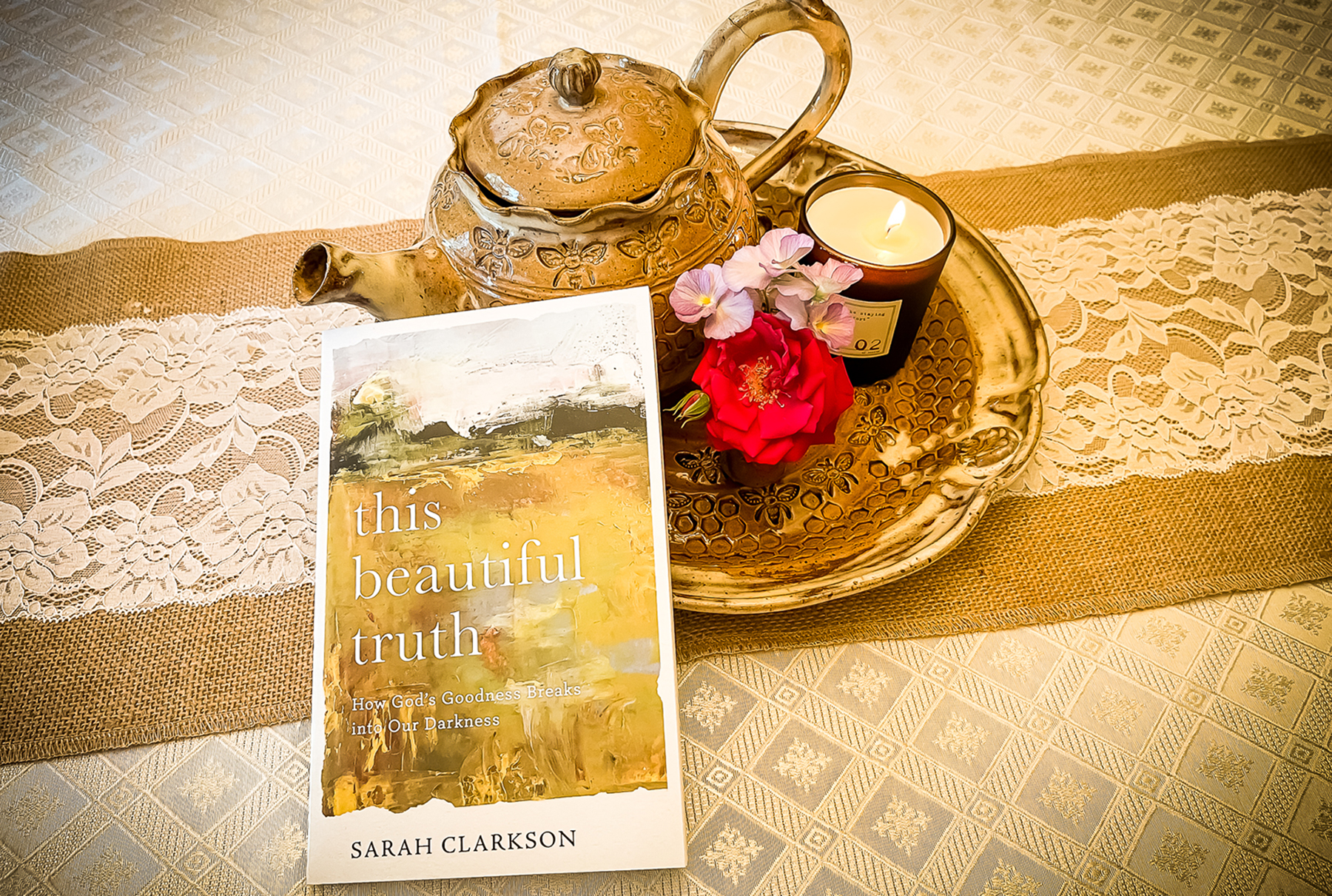


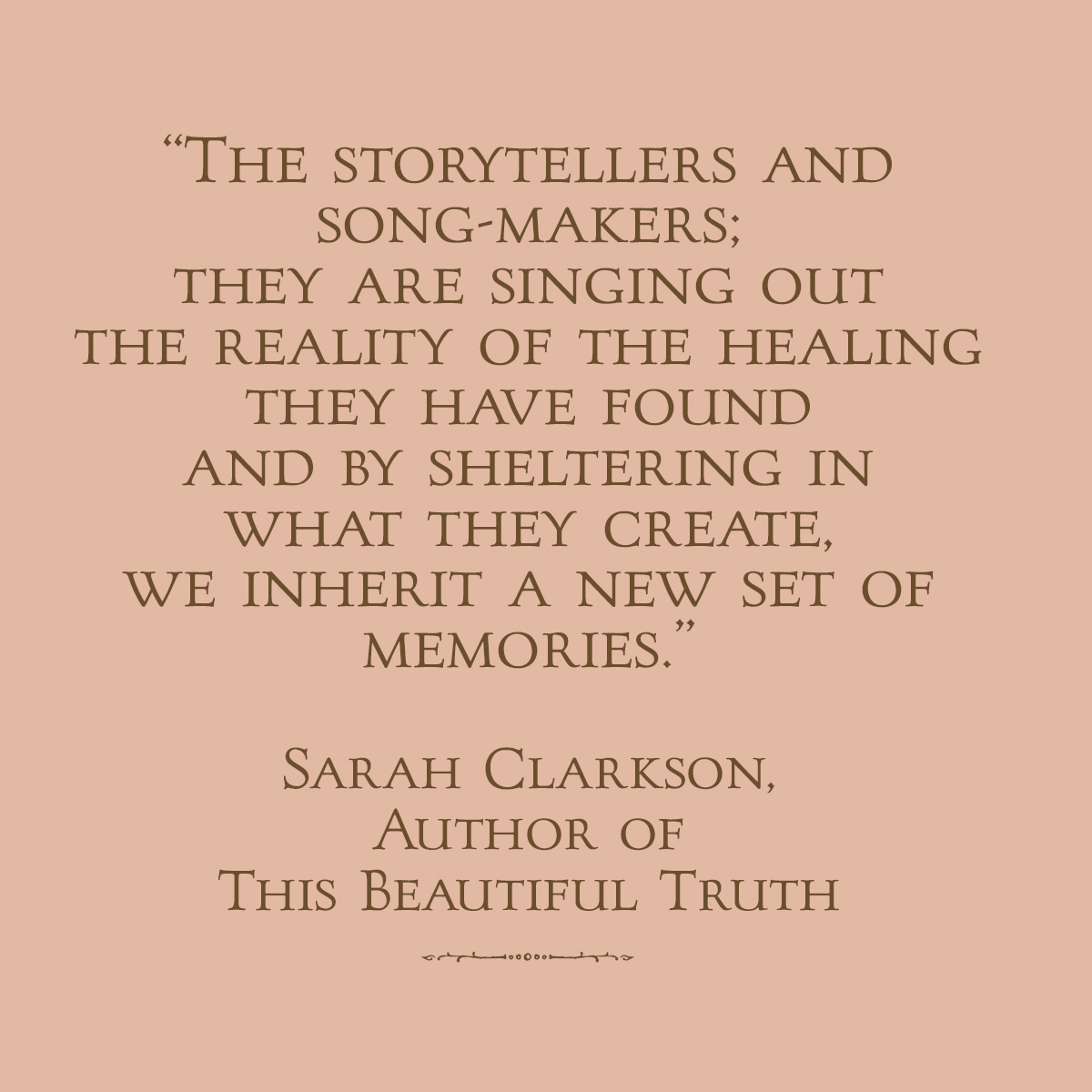
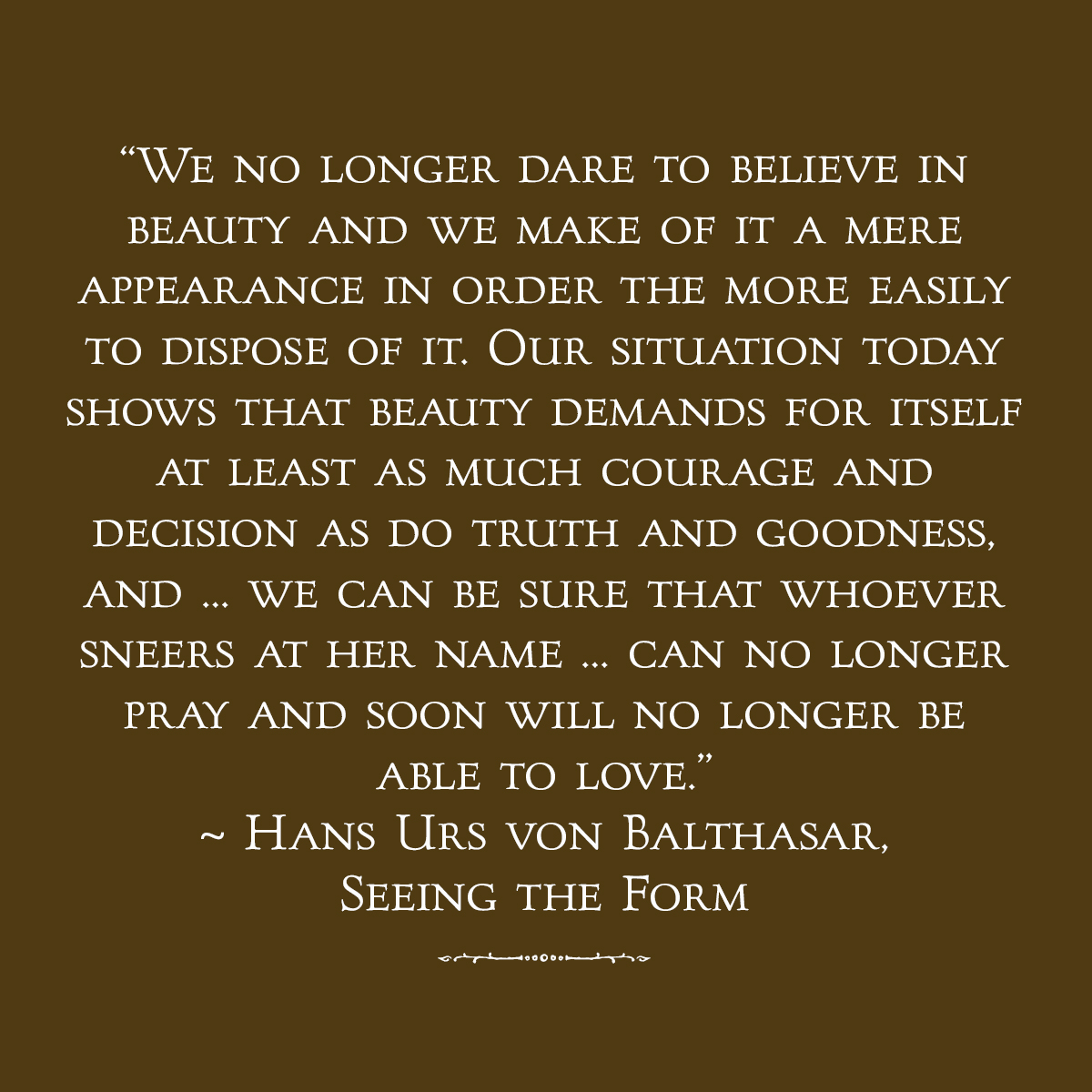

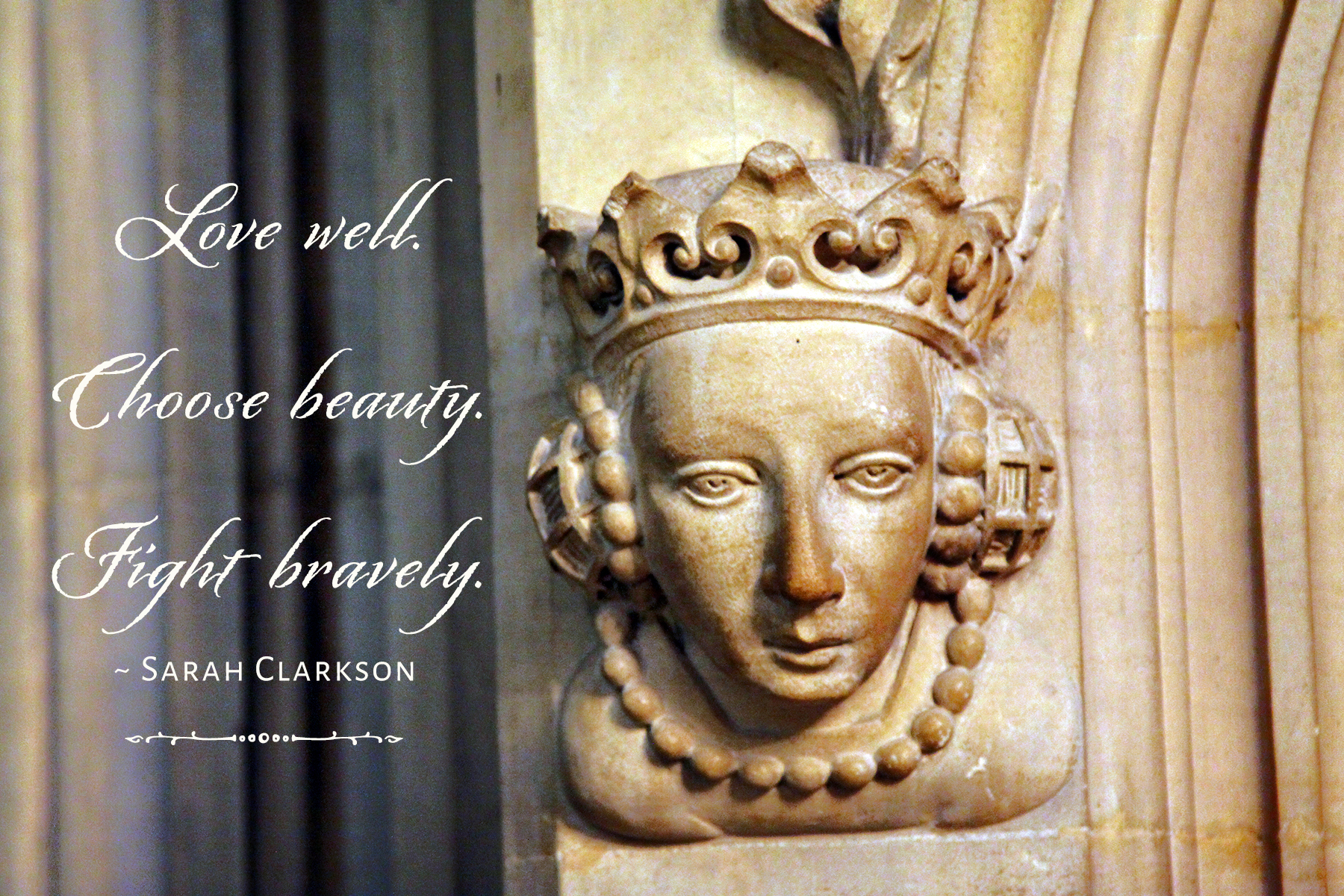
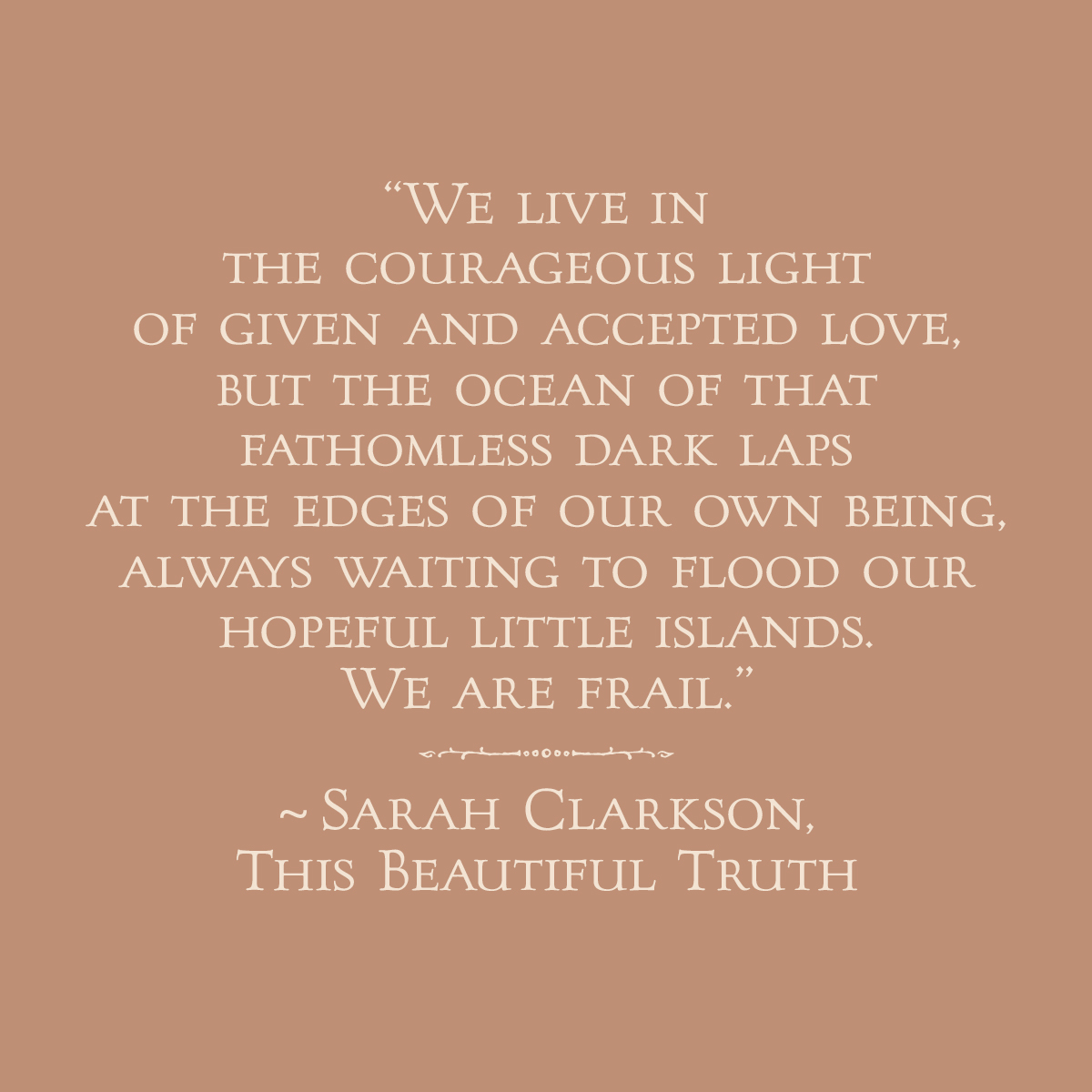
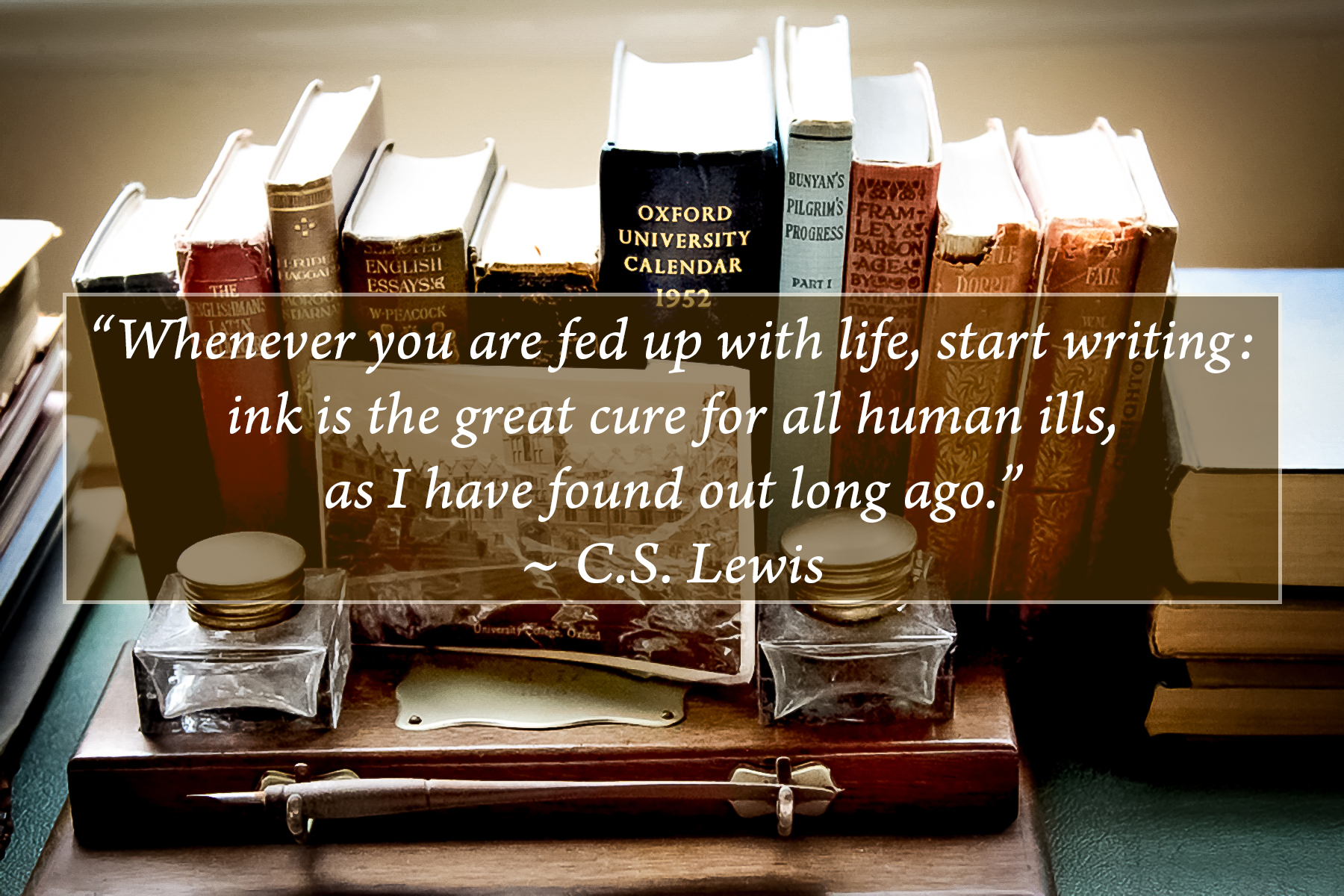
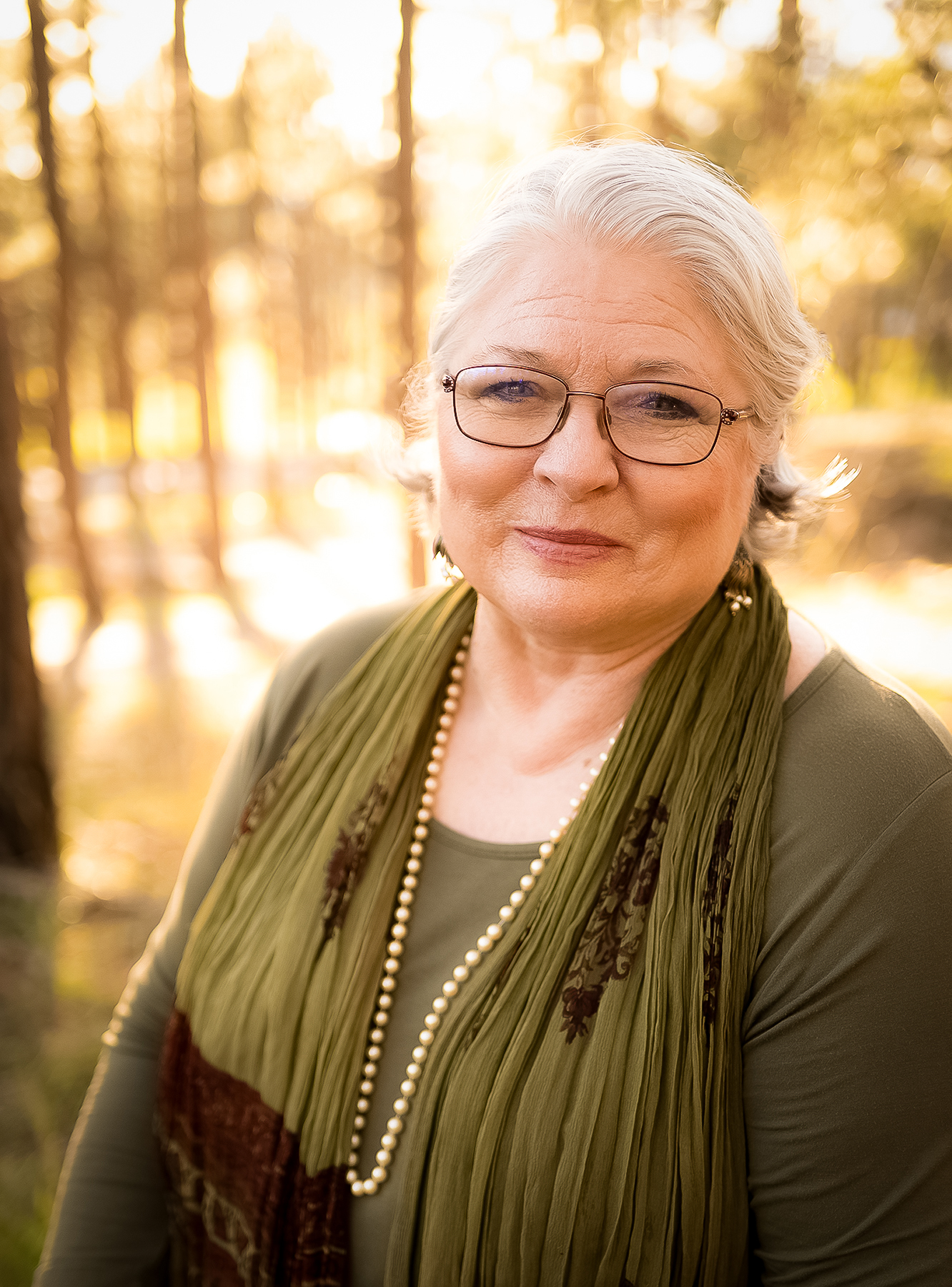
I needed this interview so much (and it only makes me even more excited about getting to read “This Beautiful Truth”)! This quote in particular jumped out at me:
“We live in the courageous light of given and accepted love, but the ocean of that fathomless dark laps at the edges of our own being, always waiting to flood our hopeful little islands. We are frail.”
This quote put into words the frustration I’ve been feeling lately myself. I’ve felt VERY frail, and I’ve wondered, “What happened to the more joyful, more confident Me? Did one traumatic injury *really* have the power to knock me down *this* much?” The imagery of the hopeful little island and the fathomless dark trying to flood it resonated with me. But so did the mention of hobbitish, holy courage, as well as the risk and reward of choosing beauty and trust in God’s goodness.
I know this is a rather long comment, but I just wanted to say “thank you” for this interview. I really needed the encouragement!
I just wish everyone would read this. To see two women who so beautifully communicate light in darkness, hope in despair, truth overcoming lies, and the power and presence of God who walks through it all with us. Such hope here. I wish everybody knew.
Emily, I’m honoured by your kind words and your attention. I, too, wish every one I know would read this because it carries such extraordinary hope for each of us. May your blessings be many, your hope deep and shimmering, and every grace be yours!
Lancia E. Smith, the interviewer, had two words that resonated whenever thinking of Sarah – flourishing and eucatastrophe. I now have two words that’ll always remind me of her, as a result of this interview. Those two words are “remembering forward”. These words are lodged in my mind now. They express beautifully where my faith rests. Joshua 21:45 reminds us that “not one word has failed of all the promises He made…” That’s remembering backwards; from this point on I’ll think of my faith as the same trusting process, but projecting it forward, or “remembering forward”. Thank you for this excellent interview.
Maverick, thank you for your kind words and for your thoughtful consideration of this interview. Sarah is one of the most remarkable individuals I have had the honour to interview over the years and her words ring edge to edge with Life. ‘Remembering forward’ is indeed a powerful way to see our way onward. Many blessings to you on that good journey!